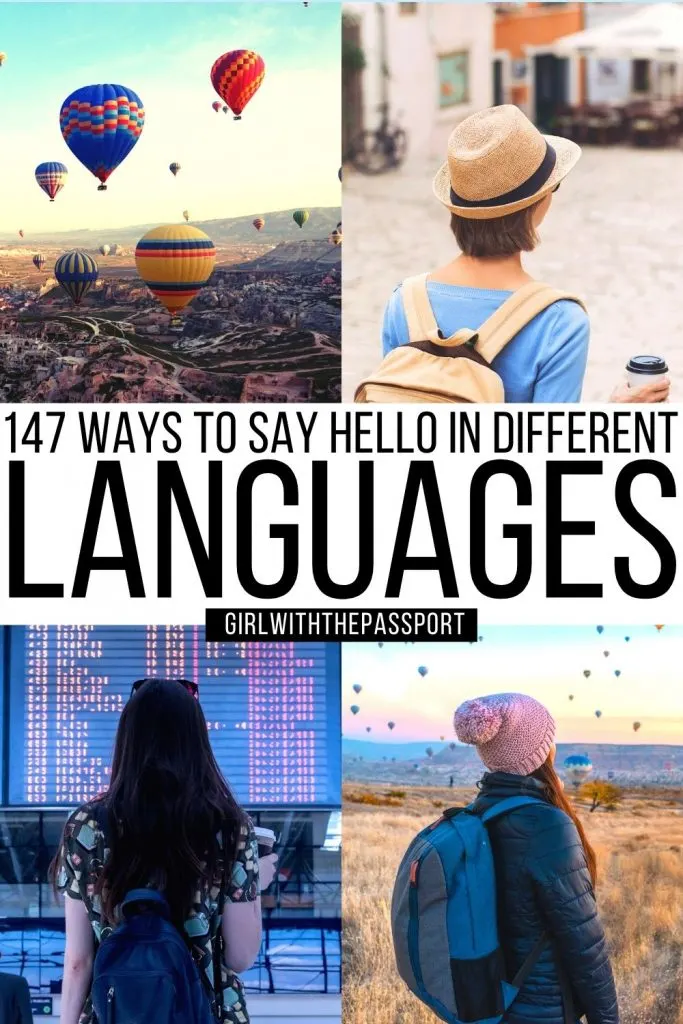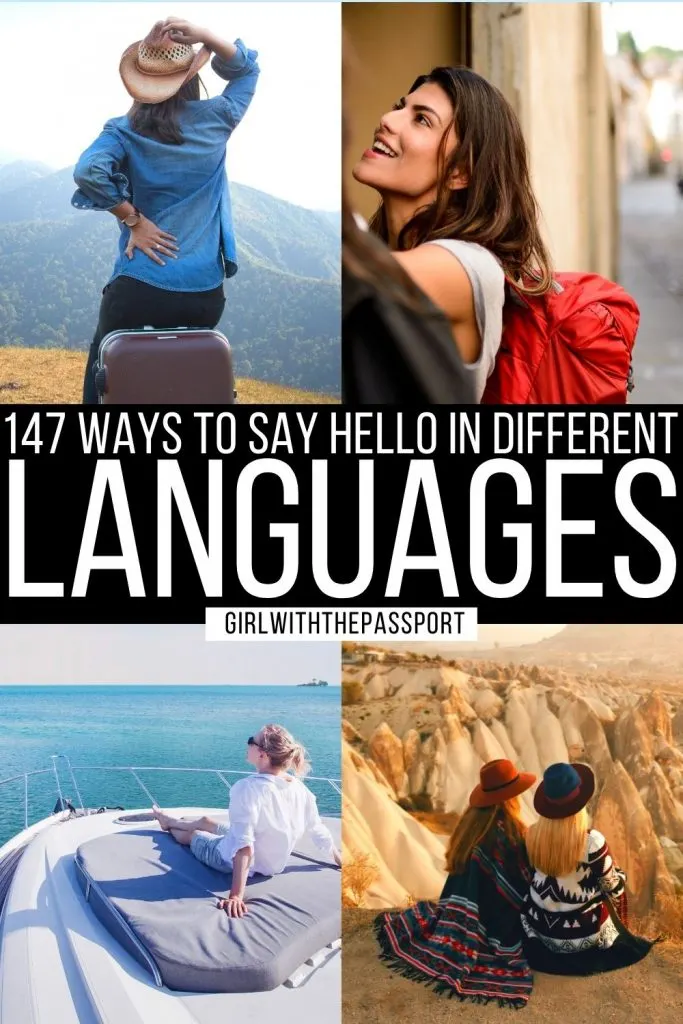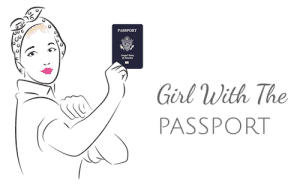Want to learn how to say hello in different languages? If so then you’ve come to the right place!
Because guess what? I’ve traveled to over 35 different countries within the past 20+ years and know just how important is to learn at least a few simple phrases before visiting any new place.
And that’s why I want to share this super comprehensive guide with you on how to learn to say hi in different languages.
After all, it has 147 different phrases that you can quickly and easily use to say “hello” regardless of where you’re traveling in the world.
It’s also listed alphabetically by language so you’ll be able to find whatever phrase you’re looking for.
So, stop dreaming and start learning how to say hello in different languages so that you can transform your travel dreams – to places like New York and Paris – into a reality.
This post may contain affiliate links. Please see my disclosure for more information. As an Amazon Associate, I earn a small commission from qualifying purchases.
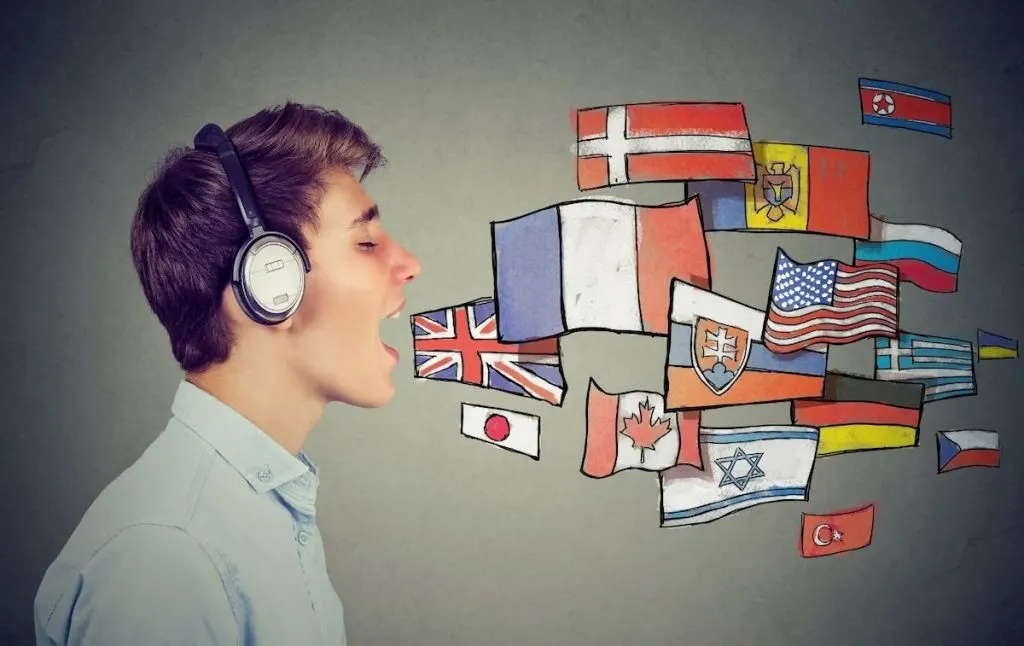
1. Afrikaans = Hallo
With Dutch origins, Afrikaans is a West Germanic language that is spoken mostly. in Namibia and South Africa. In total, it is the first language of roughly 6 million people and can be heard throughout Zimbabwe and Botswana too
How to Pronounce it: hal-low
2. Albanian = Përshëndetje
Most widely spoken in Albania, Kosovo, and the Balkans, this language is of Indo-European descent and is spoken by about 7.5 million people.
How to pronounce it = Per-shen-DEAT-ye
3. Albanian = Tjeta
This is a more informal way of saying hello in Albanian.
How to Pronounce it: TYEH-tah
4. Albanian = Tungjatjeta
A more formal way of saying hello in Albanian.
How to Pronounce it: toon-jah-TYEH-tah
5. Amharic = ሰላም (Sälam)
An informal way of saying hello, this Semitic language is the first language of Ethiopia. This word can also be used to mean “peace be with you” and can be heard in the United States, Canada, Israel, Egypt. Sweden, and Eritrea as well.
FYI, Salamno is the masculine form of the word and Salamnish is the feminine form of the word.
How to Pronounce it: sah-lam
6. Amharic = ታዲያስ (Tadiyas)
Another informal way of saying hello in Amharic. It basically means “what’s up” in English.
How to Pronounce it: Tahoe-di-yas
7. Amharic = ጤና ይስጥል (Teanastëllën)
This is a more formal way of saying hello in Amharic
How to Pronounce it: teen-as-tell-an
8. Arabic = ahlan
An informal way of saying hello in Arabic.
How to Pronounce it: ah-lahn
9. Arabic = السلام علیکم (as-salām ‘alaykum).
This formal hello can also translate into peace be with you in Arabic. It is also a common language that is spoken by an excess of 420 million people worldwide in regions like the Middle East, North Africa, and the Arabian Peninsula.
It is also the language of worship for 1.6 billion million Muslims across the world and has a unique written form that is spelled out from right to left.
FYI, this formal greeting is one of the many ways of how to say hello in different languages that can also be shortened to salaam (سلام).
How to Pronounce it: ahs-sahlahm ‘ah-leh-loom
10. Arabic = مرحبا (marhaba)
This is another informal way of saying hello in Arabic.
How to Pronounce it: mahr-hah-bah
11. Armenian = barev dzez or barev
Spoken mainly in Armenia this is an Indo-European language that is spoken by around 6.7 million people worldwide.
There are also two ways of saying hello in Armenian. You can say it formally with “barev dzez” or more informally with just “barev”.
How to Pronounce it: bah-REV or bah-REV DZEZ
12. Azerbaijani = سلام (cалам)
As the official language of Azerbaijan, Azerbaijani (or Azeri) is a Turkic dialect that is spoken by roughly 8.8 million people and that is very similar to Turkish.
It can also be heard throughout Northern Iran, parts of Georgia, southern Dagestan, and Shia cities in Iraq.
How to Pronounce it: sa-laam
13. Azerbaijani = salam əleyküm
Another way of saying hello and greeting someone in Azerbaijani.
How to Pronounce it: sa-laam-mu-alaikum
14. Basque = egun on
Basque, otherwise known as Euskara, is a language spoken in the Basque Country of Spain in Gipuzkoa, Araba, Bizkaia, and Navarra.
It’s also spoken in the French Basque Country in places like Labourd, Soule, and Basse-Navarre) and is unlike any other language spoken in Europe.
Now, “Egun on” specifically is a greeting that translates to “good morning” in English and that is typically used in the morning before midday.
How to Pronounce it: egg-un own
15. Basque = gau on
This saying roughly translates to “good night” in English and is typically used as a greeting after the sun sets.
How to Pronounce it: gow-own)
16. Basque = kaixo
This is another way of saying a simple hello in the Basque language.
How to Pronounce it: kai-show
17. Bavarian or Austrian German = grüß Gott
Bavarian is German dialect that is spoken not just in the German region of Bavaria but throughout Northern Italy and western Austria too.
Therefore, it’s a latin-based language that is used by more than 14 million people and that uses basic German grammar.
Other ways of saying hello in Bavarian include servus (ser-voos) and seavus (SE-ah-voos).
How to Pronounce it: gruess-got
18. Belarusian = biтаю
As you probably already guessed, this is an East Slavic language that is spoken in Belarus as well as Ukraine, Russia, and Poland.
How to Pronounce it: vee-tie-you
19. Bengali = Assalamu Alaikum
Known for being the only official language of Bangladesh, Bengali is actually the sixth most spoken language on the planet since it is one of many official languages in India.
It is also spoken widely in the Indian states of West Bengal, Assam, and Tripura and is spoken by upwards of 210 million worldwide – about 100 million of whom are in Bangladesh and 85 million of whom are in India.
Please note that the above greeting is used in Bangladesh only since there you typically start your greeting with salon
How to Pronounce it: Assalamu Alaikum
20. Bangali = নমস্কার (Nomoshkaar /Namaskāra)
This is another way to say hello in Bengali that is used throughout West Bengal and other starts in India.
However, other ways to say hello here include “hello” or “pronam”. You can also start conversations by saying kemon achen” to anyone older than you and “kemon acho” to anyone younger than you.
How to Pronounce it: Nomoshkaar or Namaskāra
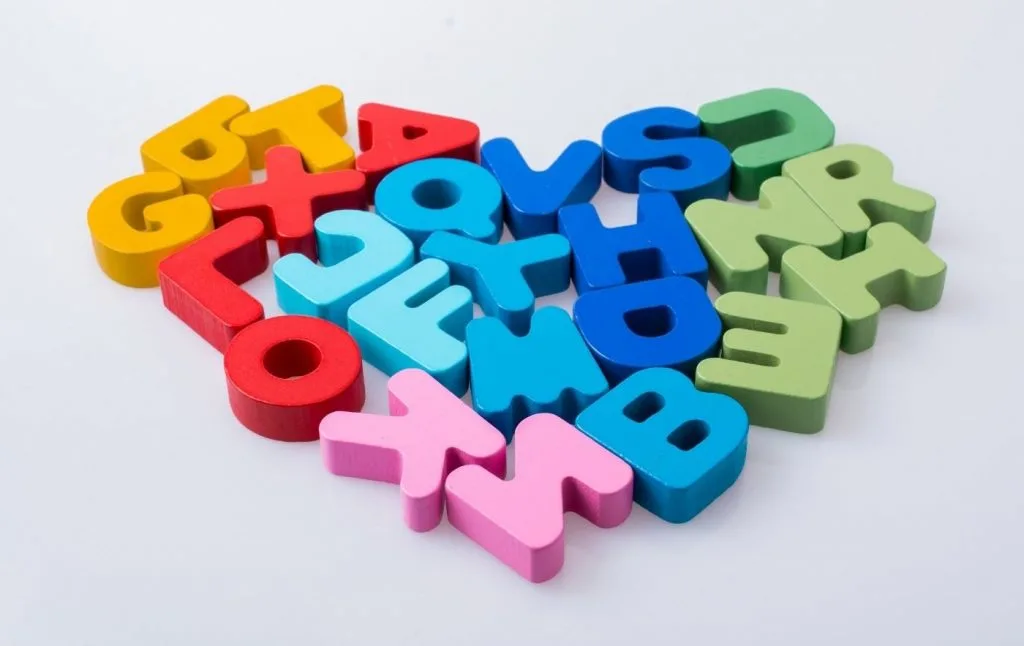
21. Bodo (बर’/बड़) = Wai, Oi, or Oye
This is a language of Sino-Tibetan origin that is spoken by around 3.3 million Bodo people in Nepal, Bengal, and India.
It is also the official language of Bodoland autonomous region and is the second official language of the Assam state in India.
Wai, Oi, and Oye are all informal ways of saying hello that would be shared between a married couple.
How to Pronounce it: Wai or Oi or Oye.
22. Bosnian = dobar dan
This is a language that is of southern slavic origin and that is the first language of Bosnia. It is also basically exactly the same as the languages spoken in Serbia and Croatia since all three languages were classified as Serbo-Croatian prior to the break-up of Yugoslavia.
Please note that is is one of the more formal ways of how to say hello in different languages. Therefore, you could always use zdravo (ZDRAH-voh) or merhaba (MEHR-hah bah) in more informal situations.
How to Pronounce it: DOH-bahr dahn
23. Brazilian Portuguese = olá or oi
This is a dialect of Portuguese that is spoken in Brazil and that is used by a solid 200 million people. However, you can also find it various Brazilian communities across the world.
It’s also worth noting that Brazilian Portuguese and European Portuguese do vary in terms of vocabulary and overall pronunciation.
Also, other ways to say hello include Bom dia (good morning), Boa tarde (good afternoon) and Boa noite (good evening).
How to Pronounce it: oh-LAA
24. Breton = Demat
Spoken in Brittany, France, this language is of Celtic origin and is used by 210,000 native speakers in Brittany and 16,000 native speakers in Île-de-France.
How to Pronounce it: de-mat
25. Bulgarian = Здравейте (zdraveĭte) or zdravei
As the native language of Bulgaria, Bulgarian is a southern slavic language that is written is Cyrillic and that is spoken by 8 million different people.
Both of these words are more formal greetings and you would use zdraveĭte when speaking with a group of people and zdravei when you’re just speaking to one person.
You can also say hello more informally in Bulgarian by saying zdrasti (Здрасти).
How to Pronounce it: Zdraveĭte
26. Burmese = Mingalarba
As the official language of Myanmar and the Bamar people, Burmese is the first language of 33 million people and the second language of over 10 million.
It is also a Sino-Tibetan language that can be heard within Burmese communities around the world.
How to Pronounce it: meen-gah LA-ba
27. Cambodian Khmer = ជំរាបសួរ (chum reap suor is formal) or sous-dey (an informal hi)
Used as the principle language of the people of Cambodia, Khmer has over 16 million speakers worldwide and is the second most used of the Austroasiatic languages.
How to Pronounce it: jum reap sour (formal) and sous-dey (informal)
28. Catalan = Hola
Catalan is a Romance language that is the first language of Andorra and one of many official languages in the autonomous regions of Valencia, Catalonia, and the Balearic Islands in Spain.
In total, 9 million people within these areas speak this language.
How to Pronounce it: OH-lah
29. Chichewa = moni moni onse (general greeting for all people)
Spoken throughout Mozambique, Zambia, and Zimbabwe, Chichewa (or Nyanja) is actually the official language or Malawi and is a Bantu language.
You’ll hear it used in much of southeastern and Southern Africa and can also use “moni bambo” when speaking to a man and “moni mayi” when speaking to a woman.
How to Pronounce it: mooni-mooni-on-se
30. Cantonese = 你好 (néih hóu)
Also known as Yue, Cantonese is a Chinese dialect that is spoken by 64 million people in Southern China and Hong Kong.
In fact, it was started in the city of Guangzhou and is a Sino-Tibetan language that would be useful to know should you ever visit China.
How to Pronounce it: nie haow
31. Corsican = bonghjornu
Spoken primarily on the Mediterranean island of Corsica, this language is part of the Italo-Dalmatian family and is very similar to Italian spoken in Tuscany and Florence.
How to Pronounce it: bwohn JOHR-noh
32. Croatian = bok or dobar dan (aka good day)
Spoken in Croatia (obviously), Croatian is the first language of nearly 5.5 million people in Croatia, parts of Serbia, and Bosnia and Herzegovina.
It’s also a Southern Slavs language that is otherwise known as Hrvatski. And while you can say “bok”, you can also say “dobar dan” which means good day.
How to Pronounce it: bohk
33. Czech = ahoj
With more than 10 million native speakers spread all across the world, this western Slavic language is very similar to Slovak.
It also almost completely disappeared in the 17th century and has two official greetings. You can say “ahoj” which is a casual hello or “dobrý den” (DOH-bree dehn) which is equivalent to good day in English.
How to Pronounce it: ahoy
34. Danish = hej or hallo
Known for being the official language of Denmark, Danish is a Scandinavian language with about 5 million speakers around the globe.
Therefore, you can hear is spoken in the Faroe Islands, parts of Iceland, Greenland, and in some communities in Germany that share a border with Denmark.
You can also greet people in Danish with Hej (a casual hello) or hallo which is slightly more formal.
How to Pronounce it: Hai or ha-loh
35. Dutch = Hallo, goedendag, or Hoi
Spoken by around 27 million people living in the Netherlands and in Northern Belgium, native speakers of this West Germanic language can say “hello” in a variety of different ways.
Options include “hallo”, “goedendag”, and the super informal “hoi”.
How to Pronounce it: HAAL–oo
36. Dzongkha = kuzu-zangpo la
This is the national language of Bhutan and is spoken only by around 500,000 people. It is also of Sino-Tibetan ancestry and is written using the Tibetan alphabet.
How to Pronounce it: koo-zoo-zang-poh-la
37. English = Hello
The second most spoken language on the entire planet, English is a fairly universal language that is the first language of nearly 375 million people worldwide.
And that that makes sense since it is the first language of the United States, the UK, Australia, and New Zealand.
How to Pronounce it: huh-lOH
38. Estonian = Tere
This is a language of Finno-Ugric origins that is the official language of Estonia. It’s also very closely related to Finnish.
How to Pronounce it: TEHR-reh
39. Farsi or Persian = سلام (Salām), درود بر تو (Dorood bar to), or درود بر شما (Dorood bar shoma)
Referred to as Farsi in Iran, Tajik in Tajikistan, and Dari in Afghanistan, Farsi is spoken by 62 million native speakers and is an Indo-Iranian language with ancient origins.
How to Pronounce it: saol-am
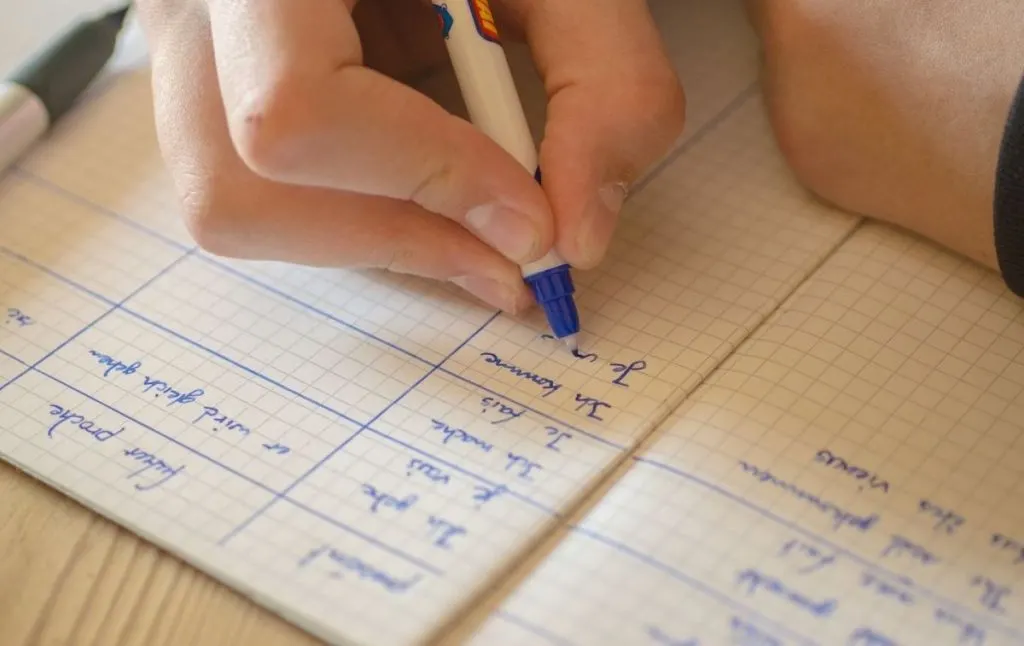
40. Fijian = bula
This is the official language of Fiji and is spoken natively by between 350,000 and 450,000 people.
It’s also part of the Malayo-Polynesian family of languages and is classified as a Austronesian language.
How to Pronounce it: mbula
41. Finnish = hyvää päivää
Spoken in, you guessed it, Finland, 4.9 million people speak this Uralic language. It can also be heard in Sweden, Norway, in some parts of Russia, and Eastern Karelia.
Finns on the whole are also pretty informal. Therefore, you can use informal greetings in most instances.
As a result, there are a variety of different ways to say “hello” in Finnish. You can say “hyvää päivää” for “good day”, “hei” (hay) for an informal “hello”, “terve” (TEHR-ve) as another informal “hello”, and “moi” (Moy) as yet another informal version of “hello”.
How to Pronounce it: HUU-vaa PAI-vaah
42. French = allô
And this is yet ANOTHER way of saying hello in French. Crazy right? Who know there were so many ways to say hello in French.
Anyway, this is one of the ways on how to say hello in different languages that is basically used on the phone and when answering the phone and that’s about it.
43. French = Bonjour
You’ve probably heard this word before since this is one of the more familiar entries on this list of how to say hello in different languages (Beauty and the Beast anyone?).
In English, Bon roughly translates to “good” while Jour roughly translates to “day”. Therefore, Bonjour means “good day” and be used both formally and informally at any time of day. You can also use it anywhere at any time as a greeting whether it’s with a family member or someone you recently met.
However, what you may not know is that French is a romance language that is the official language of nearly 354 million spread across 29 different countries including France, the Republic of Congo, Belgium, Burundi, Luxembourg, Guinea, Niger, Mali, and more.
How to Pronounce it: bon-ZHOOR
44. French = Bonsoir
Also a French saying, Bonsoir is typically used to say “good evening” towards the end of the afternoon, at around 6:00 pm.
Therefore, at this time of day, you’d stop saying “Bonjour” and start saying “Bonsoir”. If you want, you could also use it as a form of “goodbye” since it can also translate to “goodnight” at this time of day.
How to Pronounce it: bon-swar
45. French = Coucou
Looking for an even MORE informal way of saying hello in French? If so then this it since this greeting is only used among super close friends and family and with children too.
How to Pronounce it: kou-kou
46. French = Salut
Less formal than Bonjour, salut is another way to say hello in French. It is also typically used as a greeting among close friends and family.
How to Pronounce it: sah-LUU
47. Frisian = goeie
Spoken by 500,000 people along the Southern end of the North Sea in the Netherlands and Germany, this is a historic Germanic language that is one of the more unfamiliar ways that you can learn how to say hello in different languages.
How to Pronounce it: GOO-ee
48. Georgian = მიესალმები (miesalmebi) or გამარჯობა (gah-mahr-joh-bah)
This is the official language of Georgia and is only spoken by around 4 million people worldwide. It is also written in Georgian script and features three different alphabets.
It’s also not as tough to learn as people think and the standard greeting in Georgia, “Gamarjoba” actually means “victory” in English.
How to Pronounce it: gah-mahr-joh-bah
49. German = guten tag
German is spoken by 130 million people in the world and is the national language of Germany, Austria, and one of three official languages in Switzerland.
It is also an Indo-European language and is taught in many schools across the globe since it is a parent language to many modern day dialects.
And although “guten tag” is a formal “good day”, you can also say “hallo” and “tag” (tag) as a more casual greeting.
How to Pronounce it: goo-ten tahk
50. Greek = γεια σας (yassas)
This ancient Hellenic language is more than 3,000 years old. Currently, it is spoken by 13 million people that live throughout Greece, Cyprus, and Albania.
You also have a variety of different ways to say “hello”. So, if you want to be informal you can say “xαίρε” (chai-ray) or “yassou” (YAH soo).
Conversely, if you can be more formal and say “yassas” (YAH sahss) which means “good health” in English.
There are also many variations of “hello” in Greek based on the time of day. So, you can say “kalimera” for “good morning”, “kalispera” for “good afternoon”, and “kalinita” for “good evening”.
How to Pronounce it: YAH sahss
51. Gujarati = namaste
An Indo-Aryan language that can be found predominantly in the Indian state of Gujarat, it is spoken by upwards of 46 million people.
It is also officially recognized in the Indian constitution and people can greet one another saying “namaskaar”, “namaste”, or “kem cho” (kem-choh).
How to Pronounce it: nah-mah-steh
52. Haitian Creole = Bonjou
This French version of the Creole language is spoken by anywhere between 10 and 12 million people and is the only language spoken by many Haitians.
Along with French, it is also the official language of Haiti and speakers can say hello using the informal “alo” or the more formal “bonjou” (BOH-joo).
If you want, you can also say something like, “Hey, what’s up?” using the informal “sak pase” (sak-pase).
How to Pronounce it: BOH-joo
53. Hausa = Sannu
Spoken by between 50 and 60 million people living in northern Nigeria/Niger, Chad, Burkina Faso, Cameroon, Benin the Central African Republic (CAR), Chad, Congo, Eritrea, Ghana, Togo, and Sudan, it’s an Afro-Asiatic language that forms an important linguistic link between Central and West African languages.
How to Pronounce it: san-NU
54. Hawaiian = Aloha
This Polynesian language is the official language of Hawaii, the biggest island in the famous archipelago in the North Pacific.
It is also spoken by less than 24,000 people currently, many of whom are on the island of Ni’ihau, and only has 13 letters in its alphabet.
How to Pronounce it: ah-low-ha
55. Hebrew = Shalom
Hebrew was made the official language of Israel in 1922 and is currently spoken by 9 million people around the globe.
It is also a Northwest Semitic language that was used in the Bible and has a unique set of letters that are written from right to left.
And while “shalom’ is a more formal greeting, you can also say “ma korae” if you want to be a little less formal.
How to Pronounce it: shah-LOHM
56. Hindi = नमस्ते (Namaste)
Across the globe, 425 million people speak Hindi as their first language and more than 120 million additional people speak it as their second language.
Therefore, it is one of the most widely spoken languages on the planet and can heard in India, Nepal, and various Indian communities around the globe.
It is also sometimes referred to as “the mother of all languages” since it descends from Sanskrit.
Now, when you use “namaste” as a greeting, remember that it should be said with respect and piety since it comes from the Sanskrit word “namah” which means “bow” and “te” which means “to you”.
Therefore, it should be said with a small bow of the head and you you should bring your hands to a player position as you do this.
How to Pronounce it: Nah-mas-teh
57. Hmong = nyob zoo
Spoken by a solid 2.6 million people in southern China, Laos, Vietnam, the US, Thailand, and French Guiana, this Hmong-Mien language used the word “nyob zoo” to say “hello”.
How to Pronounce it: nyob zoo
58. Hopi = ha’u
Spoken by almost 7,000 people in Northeastern Arizona, this indigenous, Uto-Aztecan language in the US is uses the words “ha’u” or “waynuma” to say, “hello”.
How to Pronounce it: hah-uh
59. Hungarian = jó napot, szervusz, or szia
Hungarian is a Uralic language spoken by 13 million people worldwide, 9.8 million of which live in Hungary. It is also one of 24 official languages of the EU and is the first language of Hungary.
You can also so hello using “jó napot” (yoe naupote), “szervusz” (SEHR-voos), or more informally with “szia” (SEE-ah).
How to Pronounce it: yoe naupote

60. Icelandic = halló
Spoken by 350,000 people spread out across Iceland, Denmark, Norway, Sweden, Canada, and the US, Icelandic is the national language of Iceland and is of North Germanic origin.
You can also learn how to say hello in different languages in many different ways in Icelandic. So, if you want a more informal greeting, you can say “hæ” (hai), “Sæll” (Sight-l) to a man, and Sæl (Sigh-l) to a woman.
Conversely, you can also use “halló”(hal-law) and góðan dag (gothan dahg) to say hello too.
How to Pronounce it: hal-law
61. Indonesian Bahasa = Halo or Hai
Spoken by upwards of 230 million people around the globe, Indonesian Bahasa is the national language of Indonesia and is part of the Austronesian language group.
And while it used the Latin alphabet, numbers are written using Arabic. You can also say “hello” using either “Halo” (HAH-loh) or “Hai “(high).
How to Pronounce it: HAH-loh or high
62. Inuktitut = ᐊᐃᓐᖓᐃ (Ainngai)
Used by around 47,000 people living across the arctic regions of Canada and Alaska, Inuktitut is a unique language in North America that is fun to use.
So, try saying “hello” using the word “Ainngai” as you figure out how to say hello in different languages.
How to Pronounce it: Ainngai
63. Irish = dia dhuit
As a national language of Ireland and an official language of the EU, Irish (or Gaeilge) is spoken by around 1.7 million people in the world, many of whom live in Ireland.
It is also a Goidelic language, like Scottish Gaelic, and is part of a family of Celtic languages. You can also say “hello” using “dia dhuit”.
How to Pronounce it: DEE-ah GHWIT
64. Italian = ciao
As one of the most popular Romance languages in the world, Italian is spoken by around 85 million people throughout Italy, Sicily, and Sardinia.
It is also the official language of San Marino, Vatican City, and Italy and has many different ways to say hello, including the informal “ciao: (chow), “pronto” when answering the phone, and “salve” (SAHL-veh) if you want to be a bit more formal with your greeting.
How to Pronounce it: chow
65. Italian = buongiorno, buon pomeriggio, buonasera, and buena notte
Like with many of the other Romance languages on this list, there are a variety of different ways to say “hello” based on the time of day.
Therefore, if you want to learn how to say hello in different languages, you can use “buongiorno” for “good morning”, “buon pomeriggio” for “good afternoon”, “buonasera” for “good evening”, and “buena notte” for “good night”.
How to Pronounce it: buon·giór·no
66. Japanese = こんにちは (Kon’nichiwa)
Japanese is part of the Japonic language family that is spoken mostly in Japan. And while there are many ways to say “hello” based on the time of day, “Kon’nichiwa” is pretty widely used and can be said at any time of day, whether you’re in a more formal or informal setting.
You can also bow when you say “hello” since it is a huge sign of respect in Japan.
How to Pronounce it: kohn-nee-chee-wah
67. Japanese = お早うございます (ohayō gozaimasu), 今日は (konnichiwa), and 今晩は (konbanwa)
In the Japanese language, your greeting can also vary based on the time of day. So, when learning how to say hello in different languages, you can use “ohayō gozaimasu” to mean “good morning”, “konnichiwa” to mean “good afternoon”, and “konbanwa” to mean “good evening”.
How to pronounce it: kohn-nee-chee-wah
68. Kannada = ನಮಸ್ಕಾರ (Namaskār)
Used by roughly 45 million people living in the southwestern part of India, this Dravidian language uses the word “Namaskār” to mean “hello”.
Therefore, feel free to use this popular greeting in Indian states like Kerala, Andhra Pradesh, Maharashtra, Tamil Nadu, and Telangana.
How to Pronounce it: Nan-skar
69. Kazakh = Сәлем (sälem)
Known for being the official language of Kazakhstan, this Turkis- based language is spoken by around 21 million people in China, Mongolia, and Kazakhstan.
There are also several ways to say “hello” based on how formal or informal you want to be. So, you can use “sälem” (sah-lem) for a low-key “hello”, “assalamu aleikum” (as-sa-laamu a-lay-kum), or “sälemetsiz be” (sah-lem-met-siz beh) for a more formal greeting.
You can also reply with “wa aleikum ssselam” when someone talks to you first.
How to Pronounce it: sah-lem

70. Korean = 안녕하세요 (Anyeong haseyo)
This language is spoken by 75 million people living in North and South Korea and an additional 2 million people living in China and 1 million people living in the US.
Now, to formally say “hello”, you can use “Anyeong haseyo” since it means “please be well” in English. Otherwise, you can shorten your greeting in a more informal situation to just “Anyoung” (AHN-young).
How to Pronounce it: AHN-young-ha-say-yo
71. Kurdish = silav or as-salaamu’ alaykum
Used in Western parts of Asia like Kurdistan, Syria, Turkey, Iraq, and Iran, Kurdish is used by around 30 million people and is of Inso-Iranian origins.
You can also choose to say “hello” using either “silav” or “as-salaamu’ alaykum”.
How to Pronounce it: slaw
72. Kyrgyz = alamatsyzby
Kyrgyz is a language that is spoken by 4 million people, most of whom live in Kyrgyzstan. However, you can also hear this Turkic language used in parts of China, Tajikistan, Afghanistan, and Turkey.
And while you can use “alamatsyzby” as a more formal greeting, you shorten it to “salam” (sah-lam) in more casual situations.
How to Pronounce it: sah-lam-aht-seez-bee
73. Lao = ສະບາຍດີ (sa-baai-di)
Used by mainly the 7 million people living in Laos, it is also spoken by 23 million people living in Northern Thailand, who refer to it as Isan.
To say “hello”, use the phrase “a-baai-di”.
How to Pronounce it: sa-baai-di
74. Latin = salve
Although Latin is now a dead language that is no longer spoken, it is handy to know since it was the official language of the Roman Empire and is now the foundation for many of today’s modern Romance languages.
So, Spanish, Italian, Romanian, French, and Portuguese can all trace their origins to Latin, where “salve” means “hello”. You could also use “salvete” (sal-way-tay) when speaking to a group of people.
How to Pronounce it: sal-way
75. Latvian = sveiki (women) and sveiks (men)
As the official language of Latvia and one of many official languages of the EU, Latvian is an Eastern Baltic language that is used by 1.3 million people.
It’s also worth noting that your greeting will vary based on whether you’re speaking with a man or a woman. So, use “sveiki” when greeting women and “sveiks” when speaking with men.
How to Pronounce it: SVYEH-kah or SVEH-eeks
76. Limburgish = hallau, hoi, and daag
Limburgish is a unique fusion of German and Dutch that is used by nearly 1.6 million people living mostly in the Netherlands and Belgium.
It is also a part of the East Low Franconian language group and you can use “hallau”, “hoi”, and “dang” to mean “hello”.
77. Lingala = mbote
Used by 70 million people living in the Democratic Republic of the Congo , Lingala is a Bantu language where the phrase “mbote” means “hello”.
How to Pronounce it: mboh-teh
78. Lithuanian = sveiki (women) and sveiks (men)
Spoken by 3 million people in Lithuania, Lithuanian is an Indo-European language that is currently one of the oldest in the world.
Greetings in Lithuanian or also very similar to those used in Latvian since “sveiki” is used to greet women and “sveiks” is used to greet men. However, in Lithuanian, you can also use “laba diena” to mean “good day”.
How to Pronounce it: SVYEH-kah or SVEH-eeks
79. Luxembourgish = moïen
As the official language of Luxembourg, Luxembourgish is spoken by only around 390,000 people since Luxembourg is one of the smallest countries in the world.
It’s also of west Germanic origin and “moïen” can be used as a greeting.
How to Pronounce it: MOY-en
80. Luganda = ki kati
In addition to Swahili and English, Luganda is the official language of Uganda and is a Bantu language and is spoken by 20 million people in Kampala (the capital of Uganda) and the Africa Great Lakes region.
Now, in terms of greetings, “ki kati” can be used in informal situations while “oli otya” can be used with one person and “muli mutya” can be used with a group of people.
How to Pronounce it: chi kati
81. Macedonian = Здраво (zdravo) or Добар ден (dobar den)
This South Slavic language is used by around 2 million people living in the Republic of North Macedonia.
As for greetings you can use “zdravo” to mean “hello” or “dobar den” to mean “good day”.
How to Pronounce it: Z-drav-oh
82. Malagasy = salama
Known for being the national language of Madagascar, Malagasy is used by roughly 25 million people and is part of the Austronesian Malayo-Polynesia linguistic family.
To say “hello”, speakers can use “salama” or the longer form “manao ahoana” (man-ow ah-ohn-ah) to ask, “what’s up?”.
How to Pronounce it: sah-lAHm-ah
83. Malay = hai or hello
Spoken by between 250 and 300 million speakers living in Malaysia and Brunei, Malay is an Austronesian language that can be heard in parts of Singapore, Indonesia and Thailand.
To say “hello”, speakers can use either “hai” as a causal “hello” or “hello” for a regular greeting.
If you want, you can also vary your greeting by time of day since “selamat tengahari” (suh-lah-mat teng-a-haari) means “good afternoon” and “selamat pagi” (suh-lah-mat puh-guee) means “good morning”.
How to Pronounce it: he-loh or hai
84. Malayalam = halēā or namaskkaram
Spoken by 36 million people living in the Southern Indian states of Lakshadweep and Kerala, Malayalam is a Dravidian language where “halēā” and “namaskkaram” can be used to say “hello”.
How to Pronounce it: nah-mah-skahr-ahm
85. Maltese = Bongu
Maltese is the national language of Malta and is spoken by 420,000 people living across Malta, Comino, and Gozo.
It is also a central Semitic language where “bongu” is used to mean “good morning” and “Ħello” to mean “hello”.
How to Pronounce it: bon-ju
86. Mandarin (Chinese) = 你好 or nǐ hǎo
Known for being the official language of Taiwan, mainland China, and one of the official languages of Singapore, Mandarin is spoken by 1.17 million people and is the second most spoken language in the world.
How to Pronounce it: nie haow
87. Maori = kia ora or tēnā koe
As one of New Zealand’s national languages, Maori is an east Polynesian language that is spoken by between 30,000 and 150,000 indigenous people living in the island nation.
In Maori, “kia ora” can be used a casual “hello” while “tēnā koe” can be used to greet a single person.
How to Pronounce it: teh-nah koy
88. Marathi = नमस्कार (namaskār)
Spoken by 83 million people living in Indian states of Goa and by the Marathi people of Maharashtra, Marathi is an Indo-Aryan language where “namaskār” is used to say “hello”.
89. Marshallese = yokwe
Used by about 44,000 people living on the Marshall Islands, Marshallese is a Micronesian language where the word “yak” means “hello”.
How to Pronounce it: YAW-kweh

90. Mongolian = sain baina uu or sain uu
Mongolian is a Altaic language spoken by around 5 million people in Mongolia since it is the national language there.
It can also be heard in parts of China, Afghanistan, and Russia where a formal greeting like “sain baina uu” can be used to mean “hello”. Conversely, you can shorten this word to “sain uu” for a more informal greeting.
How to Pronounce it: sain bai-na OO or say-noo
91. Nepali = नमस्ते (namaste)
Nepali is the national language of Nepal and is one of many formal languages in India that is spoken by 17 million people in Bhutan, Nepal, India, Myanmar, and Brunei.
It is also a Indo-Aryan language that is written down in Devanagari script where the word “namaste” is used as a spiritual greeting.
How to Pronounce it: nah-mahs-teh
92. Neapolitan = cia or cha
This is a Italo-Dalmatian language that is spoken by roughly 5.7 million people living in Apulia, Abruzzo, Basilicata, Calabria, Campania, Marche, Lazio, and Molise in Southern Italy.
It’s also a Romance language where “cia” and “cha” are both used to say “hello”.
How to Pronounce it: cia or cha
93. Northern Sotho = khotso
Used mainly in the South African provinces of Limpopo, Gauteng, and Mpumalanga, Northern Sotho is a Bantu language that is currently spoken by 4.2 million people.
In fact, it is one of the country’s eleven national languages and uses “dumela” (doo-MAY-lah) to say “hello” to one person, “dumelang” (doo-MAY-lang) to say “hello” to a group, and “khotso” as a more casual greeting.
How to Pronounce it: coat-so
94. Norwegian = hei, hallo, god dag, or halla
As the official language of Norway, Norwegian is used by around 5 million people.
It’s also a Germanic language where “hei” (hay) is a quick “hello”, “hallo” is a bit more formal,”god dang” is used to mean “good day”, and “hall” is slang used by younger generations as a cool way to say “hello”.
How to Pronounce it: goo-dahg
95. Odia = ନମସ୍କାର (Namaskār)
This Indo-Aryan language is used in the state of Odisha in India and is spoken by 50 million people who use the word “Namaskār” to mean “hello”.
How to Pronounce it: Namaskār
96. Oromo = akkam
Spoken by 30 million people living in Egypt, Ethiopia, Kenya, and Somalia, Oromo is the third most widely spoken language on the continent of Africa.
It is also a Cushitic language where the word “akkam” is used to say “hello”.
How to Pronounce it: akkam
97. Pashto = سلام (salam) or khe chare
Known for being an official language of Afghanistan, Pashto is an Eastern Iranian language that is used by between 18 and 19 million people today.
And for a causal “hello” you can use the phrase “khe chare”. Otherwise, try using “salam” as a slightly more formal greeting.
How to Pronounce it: SUH-laam
98. Polish = cześć, hej, and siema
This western Slavic language is spoken by 45 million people in Ukraine,Lithuania, Belarus, and various Polish communities all around the world.
It is also the national language of Poland and has a reputation for being one of the most difficult languages to learn.
That being said, you can easily and casually say “hi” using “cześć” (cheshch), “siema” (only for young people), and “hey”.
You could also say “good morning” with the phrase, “dzień dobry”(jeyn dob-ry).
How to Pronounce it: cheshch
99. Portuguese (Euopean) – olá or or or bom dia
With more than 200 million speakers worldwide, you can easily hear this romanic language spoken in Portugal, Brazil, Cape Verde, Macau, and many other places around the world.
And while you can causally say “hi” using “oi” you can more formally greet someone with “olá” or say “good day” using the phrase, “mom dia).
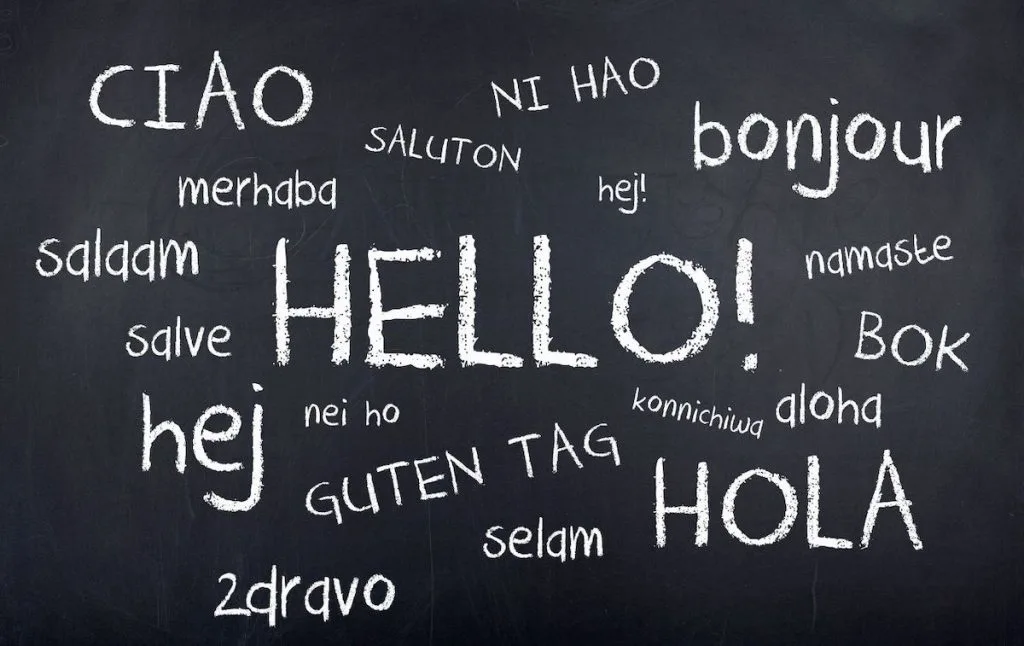
How to Pronounce it: oh-LAH
100. Punjabi = ਸਤ ਸ੍ਰੀ ਅਕਾਲ (sata Sri akaal) or as-alam-walaykum
As the 10th most common language on the globe, Punjabi is spoken by more than 110 million people in the Indian state of Punjab and in nearby Pakistan too.
It is also an Indo-Aryan language where Sikh’s will formally say “hello” with the phrase “sata Sri akaal” while Muslims will use the phrase “as-alam-walaykum” to formally say “hello”.
How to Pronounce it: saht sree ah-kahl or ah-sah-lahm-wah-lay-koom
101. Romanian = bună or salut
Since Romanian is the national language of both Romania and Moldova, it is currently the first language of between 24 and 26 million people.
It is also a Romance language of the Balkan area where “bună” is used for an informal “hello” and “salut” is used as a more formal greeting.
How to Pronounce it: BOO-nuh or sah-LOOT
102. Russian = здравствуйте (zdravstvuyte)
Spoken throughout much of Eastern Europe, Russian is the first language of upwards of 300 million people – particularly in Russia, Kyrgyzstan, Belarus, and Kazakhstan where it is the national language.
It is also an Eastern Slavic language where “zdravstvuyte” should be your universal, go-to greeting since it means, “be healthy and be well” in English.
However, you can casually say “hello” with either “zdorovo” (zduh-ROH-vuh) or “privet” (pree-VYEHT) and then answer the phone with “all”.
How to Pronounce it: ZDRA-stvooy-tyeh
103. Samoan = Talofa
Of all the Polynesian languages, Samoan is the most widely used with 500,000 speakers spread out across the Samoan islands.
And if you want to learn how to say hello in different languages, try using the word “Talofa” to say “hello” in this amazing language.
How to Pronounce it: tah-low-fah
104. Scottish Gaelic = haló
Part of the Celtic and Indo-European language families, Scottish Gaelic is a Goidelic language that is spoken by a little over 87,000 people in Scotland.
And to say “hello” in this language, just use the word, “haló”.
How to Pronounce it: ha-LAW
105. Serbian = Здраво (zdravo)
Known for being the first language of about 9 million people living in Serbia, Macedonia, Bosnia and Herzegovina, Montenegro, and Croatia, Serbian is a south Slavic dialect that is the national language of both Montenegro and Serbia (DUH).
To say “hello”, simply use the phrase, “zdravo” or more informally greet them with the word “ćao” (chow).
How to pronounce it: ZDRAH-voh
106. Sesotho = dumela or dumelang
This southern Bantu language is an official language of both Zimbabwe and South Africa and has 7.9 million speakers, many of whom are the Basotho in Lesotho.
And when using Sesotho, you can say “hello” using “dumela” when speaking with one person and “dumelang” when conversing with a group.
How to Pronounce it: doo-meh-lah or doo-meh-lang
107. Shanghainese = 侬好 (noŋ hɔ)
This variation of Wu Chinese is used by anywhere between 10 and 14 million people who live in Shanghai. To say hello, just greet someone with “non ho”.
108. Shona = mhoro
As one of the national languages of Zimbabwe, Shona is spoken by upwards of 7.5 million people and has a bunch of different dialects. It is also very helpful to learn should you plan on traveling to Zimbabwe.
So, if you want to say “hi” in this Bantu language, just use the word “mhoro”.
How to Pronounce it: mhoro
109. Sinhala = āyubōvan or halō
One of two national languages in Sri Lanka, Sinhala is spoken by around 4 million people from various ethnic groups in the country.
You can also say “hello” using the formal greeting “āyubōvan” or the less formal greeting “halō”.
How to Pronounce it: ah-yuh-boh-van or ha-loh
110. Slovak = ahoj and dobrý deň
This western Slavic language is currently the national language of Slovakia and is used by around 5.6 million people today.
Therefore, if you want to learn how to say hi in different languages, try using “ahoj” as an informal greeting and “dobrý deň” as a more formal “hello”.
How to Pronounce it: AH-hoy and dOH-bree deñ
111. Slovenian = zdravo or živjo
With around 2.5 million speakers across the globe, Slovenian is a southern slavic language that is primarily spoken in Slovenia where it is the national language.
It is also one of the EU’s official languages and you can use either “zdravo”or “živjo” to say “hello”.
How to Pronounce it: ZDRAH-voh or ZHEE-vyoh
112. Somali = Salaam alaykum
Along with Arabic, this is an Afro-Asiatic language that is spoken by between 10 and 11 million people in Somalia, the Somali region of Ethiopia, Djibouti, and beyond.
To say “hello”, simply use the words, “Salaam alaykum”.
113. Spanish = Buenos Dias
Roughly translating to “Good Morning” in English (it means “good days” if you want to be literal), it’s a more formal way of saying hello than hola.
Like with English, it’s typically said before noon and can be used in formal and informal situations.
How to Pronounce it: bwe-no. di-as
114. Spanish = Buenas Noches
Roughly translating to “Good Evening” or “Good Night”, you typically say “buenas noches” after the sun goes down.
So, If the suns sets around 5:00 pm then you might start using “buenas noches” as a greeting around 7:00 pm.
Therefore, people will start using this greeting around two hours after the sun goes down. And yes, it is common to hear people say something like “Hola, buenas noches” in the evening.
How to Pronounce it: but-nas no-ches
115. Spanish = Buenas Tardes
Roughly translating to “Good Afternoon”, this phrase is used as a greeting from midday through to the evening and sunset.
You would then use “buenas noches” once the sun went down.
How to Pronounce it: but-nas tar-does
116. Spanish = Hola
A widely spoken language in Central America. South America, and Spain, Spanish is spoken by 437 million citizens worldwide and is these language on the globe.
In totally, is id the first language of 21+ countries, with Mexico being the the single largest country that speaks Spanish.
How to Pronounce it: O-laa
117. Sundanese = halo or sampurasun
As the second most spoken language in Indonesia, Sundanese is used by more than 36 million people in and around Java.
It’s also an Malayo-Polynesian dialect so you can say “hello” informally with “halo” or you can use “sampurasun” if you want to be a bit more formal.
How to Pronounce it: Ha-LOW

118. Swabian German = grüss gott
With only around 800,000 speakers in Romania, Hungary, and the Swabia region of Southern Germany, this language is a unique and a fascinating fusion of German, Bavarian, and Dutch.
So, if you want to learn how to say hello in different languages, just use the phrase “grüss gott” to greet someone.
119. Swahili = Jabari or hujambo or jambo
With 200+ million speakers worldwide, it’s no wonder that Swahili is one of the official languages of the African Union and that is spoken throughout Uganda, Kenya, Mozambique, the Democratic Republic of Congo, Tanzania, Rwanda, and Burundi.
It’s also a Bantu language so you can use “habari”, “hujambo”, or “jambo” to say “hello”.
Pro Tip: You can also use the phrase “habari gani” to say “what’s up?”
How to Pronounce it: Ha-BAR-ee
120. Swati = sawubona
This Bantu language is spoken by around 2.4 million people in the Nguni group in Eswatini and among the Swazi people in South Africa.
So, if want to learn how to say hello in different languages, just use “sawubona” to greet someone in Swati.
How to Pronounce it: sah-woo-boh-nah
121. Swedish = “hej” or “hallå”
Similar to Norwegian and Danish, Swedish is of North German origin and is spoken by about 10 million people in Sweden and the greater Scandinavia region.
Not surprisingly, it is the official language of Sweden and the Åland Islands, where you can use either “hej” or “hallå” to say “hello”.
How to Pronounce it: Hay
122. Swiss German = hoi, grüezi, and grüezi mitenand
This is another dialect of German that is spoken in Switzerland, Austria (Vorarlberg specifically), Liechtenstein, Alsace France, and sections of Baden-Württemberg in Germany.
It is also an Upper German dialect that uses “hoI’ for a quick “hey”, “grüezi” for a more formal “hello” to a single person, and “grüezi mitenand” to formally greet a group of people.
123. Tagalog Filipino = helów or kumusta
Along with English, Tagalog Filipino is one of the national languages of the Philippines and is spoken by 64 million people who mostly live on the islands of Marinduque, Mindoro, and Palawan.
So, if you want to learn how to say hello in different languages, you can use “helów” for a quick, informal greeting or “kumusta” to say something like “Hey, what’s up?”.
How to Pronounce it: koo-moos-tah or hey-LOW
124. Tahitian = Ia ora na
Spoken by between 68,000 and 185,000 people globally, Tahitian is a French Polynesian language that is spoken on the Society Islands.
And while may people speak English and French in public, Tahitian is mainly used by locals in their homes. However, if you want to learn how to say hi in different languages, then try using “Ia ora na” to say “hello”.
How to Pronounce it: ee-ah oh-rah-na
125. Taiwanese Hokkien = lí-hó
Used by about 70% of the people in Taiwan, this dialect of Taiwanese uses “lí-hó” to greet someone.
How to Pronounce it: lee-hoh
126. Tajik = ассалом or cалом
Written using something akin to Cyrillic script, Tajik is a Western Iranian language that is spoken by 7 million people spread throughout Tajikistan and Central Asia.
It’s also related to Farsi and Kurdish and you can casually say “hello” using either “cалом” (sah-lohm) or “ассалом” (a-sah-lohm).
Alternatively, you can use the phrase “ассалому алейкум” (asah-lomu ah-lay-koom) in a more formal situation.
How to Pronounce it: sah-lohm or a-sah-lohm
127. Tamil = வணக்கம் or “Vanakkam”
Belonging to the Dravidian family of languages, Tamil is spoken by about 70 million people in Singapore, Southern India, and Sri Lanka.
So, if you want to learn how to say hello in different languages, just use “Vanakkam” anywhere Tamil is spoken.
How to Pronounce it: Vaa–NaK–Kam
128. Tarifit = azul or ola
This Berber language is used by about 2.5 million people living in the Moroccan Rif and in some parts of Algeria and Melilla in Spain too.
And if you want to say “hello” just use “ola” or “azul”, which means “peace” in English.
129. Tatar = isänmesez or sawmısız or sälam
Used by about 7 million different people living in Siberia and the Russian republic of Tatarstan, this Turkic language has several different ways to say “hello”.
So, you can use “isänmesez” or “sawmısız” as a typical greeting or use “sälam” as a more casual “hello”.
How to Pronounce it: ees-aen-meh-sehz or saw-mis-siz or sälam
130. Telugu = నమస్కారం (Namaskāram)
Since more than 84 million people speak Telugu in the Southern Indian states of Andhra Pradesh and Telangan, Telugu is actually the fourth most spoken language in India.
It is also a Dravidian language where you can use “Namaskāram” to say “hello”.
131. Thai = สวัสดี ครับ/ค่ะ (sawasdee krap for males) and สวัสดี ครับ/ค่ะ (sawasdee ka for females)
As the national language of Thailand, Thai is spoken by between 20 and 35 million people and is part of the Kra–Dai family of languages.
It is also spoken as a second language in Lanna, Isan, Northern Khmer, and Lao where “sawasdee krap” (male) and sawasdee ka (female) is used to say “hello”.
How to Pronounce it: sa-wat-dii-krap or sa-wat-dii-kha
132. Tibetan = cho demo and tashi delek
Tracing its roots to old Tibetan, the Tibetan language is spoken mostly in the Tibet Autonomous Region of China by 6 million people spread out between Tibet, India, and the Himalayas.
So, if you want to say “hello” in this Tibeto-Burman language, try saying “tashi delek” in the Lhasa dialect and “cho demo” in the Amdo dialect.
How to Pronounce it tah-shee del-ek (Lhasa dialect)
133. Tsalagi Cherokee = osiyo
As part of the Iroquoian language family, Tsalagi Cherokee has a truly unique written syllabary and is only spoken by 22,000 people in present day North Carolina and Oklahoma.
So, if you want to learn how to say hello in different languages across the globe, try saying “osiyo”. Not only does it mean “hello” but it also represents a deeper sense of spirituality, welcoming, and hospitality.
135. Tsonga = minjhani and kunjhani
Spoken by 12 million people scattered throughout South Africa, Eswatini, and Mozambique, you can say “hello” in this Bantu language by using ‘minjhani” to say “hello” to adults and “kunjhani” to say “hello” to kids.
136. Tswana = dumela
This common Bantu language is used by roughly 4.4 million people in both Botswana and South Africa – two countries in which it is an official, national language.
It is also spoken in Zimbabwe and Zimbabwe and “dumela” is commonly used to say “hello”.
How to Pronounce it: (doo-meh-lah
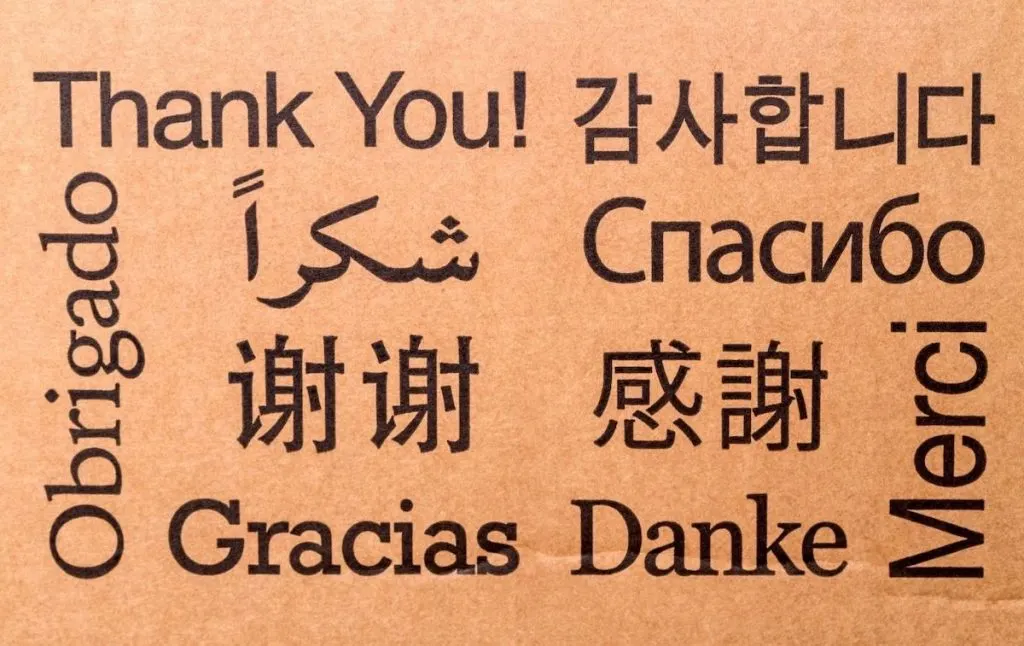
137. Turkish = merhaba or selam
As the 15th most widely spoken language in the world, Turkish is the first language of upwards of 75 million people living in Turkey, Cyprus, and other former parts of the Ottoman Empire.
It’s also a Turkic language of the Altaic family where “merhaba” can be used as a more formal “hello” and “selam” can be used more casual greeting.
How to Pronounce it: mehr hah bah or sell-um
138. Ukrainian = dobriy den or vitayu or pryvit
Around the world, nearly 35 million people consider this eastern Slavic language their first language. And while most of these people live in Ukraine, this language is also spoken throughout many parts of Eastern Europe too.
So, if you would like to learn how to say hello in different languages like Ukrainian, try using “dobriy den” to say “hello”. You can also use “vitayu” for a formal greeting or “pryvit” for a more informal “hello”.
How to Pronounce it: DOH-brihy dehn or vee-TAH-yoo or prih-VEET
139. Urdu = السلام علیکم (assalam u Alaikum)
Urdu is the official language of Pakistan and is spoken by more than 100 million people in both Pakistan and India.
It is also very similar to Hindu and the two languages can be quite interchangeable. So, if you would like to learn how to say hi in different languages like Urdu, try greeting someone with the phrase, “assalam u Alaikum”.
it can be used at any time of day and roughly translates to “peace be on you” in English.
140. Uzbek = assalomu alaykum or salom
Used as the first or second language of around 25 million people around the globe, Uzbek is a Turkic language that can be heard throughout Central Asia in Uzbekistan, Tajikistan, Kazakhstan, Kyrgyzstan, and Turkmenistan.
And if you would like to say “hello”in Uzbek, try using the phrase “assalomu alaykum” or “salom” for a more informal greeting.
141. Vietnamese = xin chào or chào bạn
Spoken by more than 77 million people, Vietnamese is a widely used Austroasiatic language that is spoken mostly in Vietnam.
Therefore, if you want to learn how to say hello in different languages like Vietnamese, try saying “xin chào” or “chào bạn” for a more casual greeting.
How to Pronounce it: sin CHOW
142. Welsh = helo or shwmae or sut mae
Spoken by about 30% of Wales, Welsh is a Brittonic language that is used by around 800,000 people.
As a result, it’s not super common but you can try saying “hello” with “helo” or casual phrases like “shwmae” or “sut mae”.
How to Pronounce it: shoe-my or sit-my
143. Woiworung = womenjeka
Woiworung is an aboriginal language in Australia that is used mostly by the Kulin Nation in Central Victoria. To say “hello” use the phrase “womenjeka”.
How to Pronounce it: woh-men-je-kah
144. Xhosa = molo
One of many Bantu languages that are known for being an official language of South Africa, Xhosa is spoken by 7 million people in the eastern provinces of South Africa.
It is a unique language in that speakers use a series of clicks to represent consonant sounds. You can also use the word “molo” to say “hello”.
145. Yiddish = a gutn tog or sholem-aleykhem
Developed around the 9th century by Ashkenazi Jews in central Europe, Yiddish is a historic language that is spoken by around 500,000 people in the United States and Israel.
Now, to greet someone in this language, you can say “Have a good day” with the phrase “a gutn tog” or just do a simple hello with the phrase, “sholem-aleykhem”.
Alternatively, you could reply to someone who says “hello” to you first with the words, “aleykhem-sholem” (ah-leh-khem shoh-lem).
How to Pronounce it: a goo-ten tawg or sholem-aleykhem
146. Yoruba = bawo ni
This pluricentric language is spoken by 20+ million people, many of whom live in southwestern Nigeria, Sierra Leone, and the Republics of Benin and Togo.
So, if you want to learn how to say hello in different languages like Yoruba, try using the phrase ” bawo ni”.
147. Zulu = sawubona
Used by around 9 million people living in the Zululand area and KwaZulu/Natal province of South Africa. Zulu is a Bantu/Nguni where the word “sawubona” is used to mean “hello”.
How to Pronounce it: sah-woo-boh-nah
Additional Resources You’ll Love
There you have it! That just about concludes this guide on how to say hello in different languages.
Tell me, your favorite ways on how to say hi in different languages make the list? If not then let me know in the comments below!
And if you found this post useful, don’t forget to join our email list before pinning this post now so that you can read it again later!
